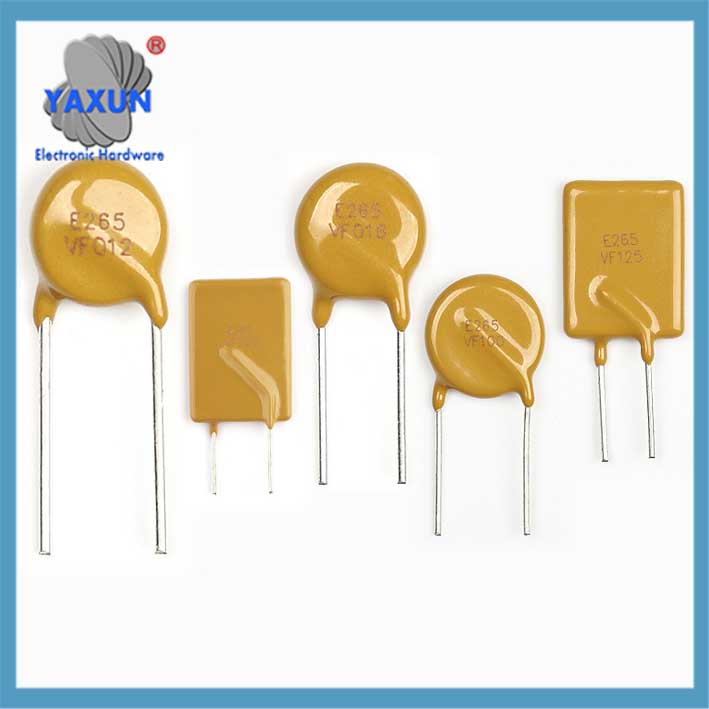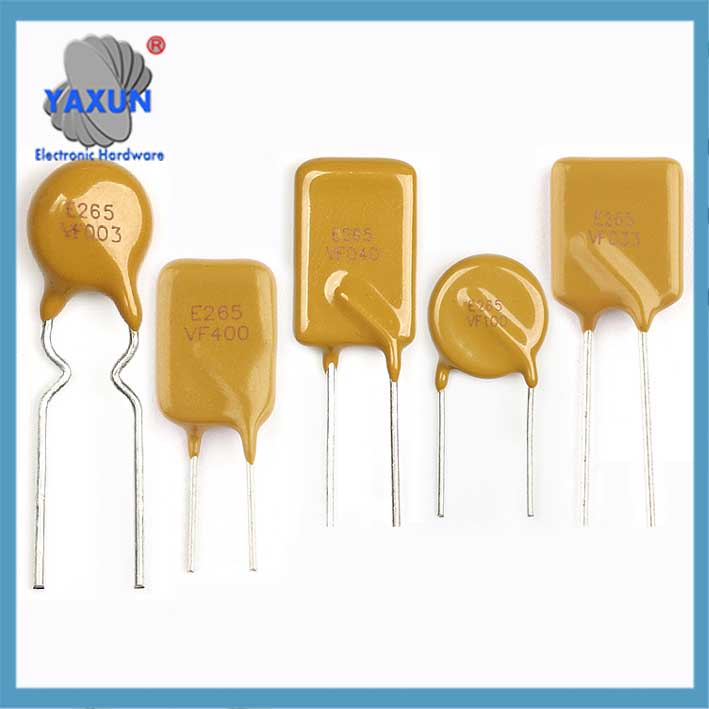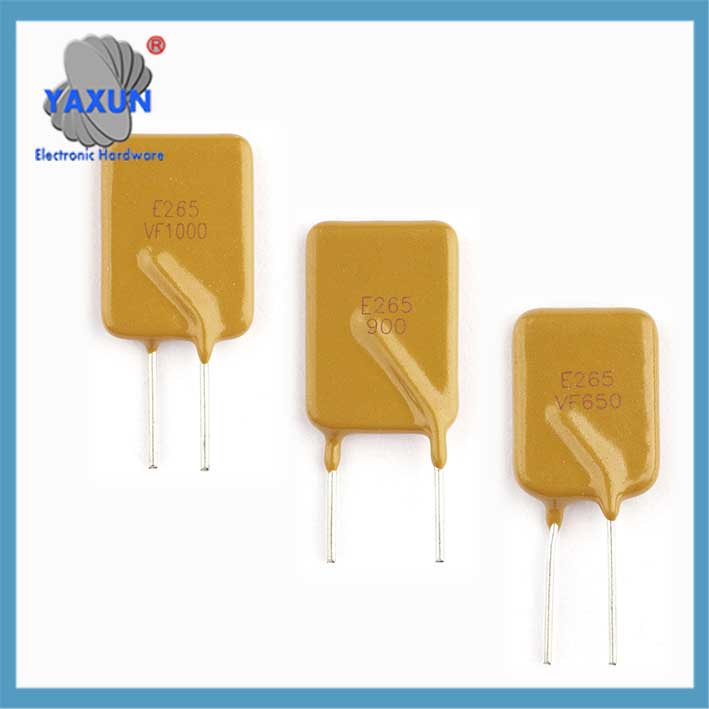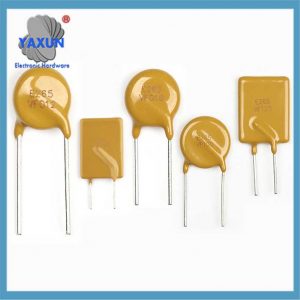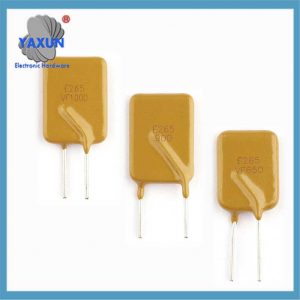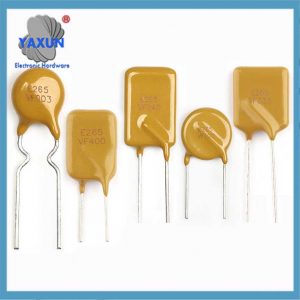Kategorie produktów
- bezpiecznik termiczny 32
- bezpieczniki do montażu powierzchniowego 12
- termistor 36
- Uchwyt bezpiecznika do montażu na płytce drukowanej 27
- Wiązka przewodów 6
- Uchwyty bezpieczników ostrza 17
- termostat 50
- Bezpiecznik elektryczny 24
- Motorowy czujnik temperatury 7
- Wyłącznik termiczny 22
- Uchwyt skrzynki bezpieczników 36
- Czujnik temperatury 75
- Wyłącznik termiczny 68
- Bezpiecznik samochodowy 20
- Przykręcić bezpieczniki 8
Tagi produktów
Chiny producent przesiedlenia bezpieczników
Bezpiecznik resetowalny wykonany jest z polimeru o dodatnim współczynniku temperaturowym (PTC) tworzywo. Automatycznie odcina obwód w przypadku przetężenia lub zwarcia. Po usunięciu usterki obwodu, automatycznie przywraca przewodnictwo, eliminując potrzebę ręcznej wymiany bezpiecznika.
A resettable fuse (Pptc) is an overcurrent protection component with an automatic reset function. Made from a composite of high-molecular polymer and conductive particles, it quickly cuts off the current when a circuit anomaly occurs and automatically restores conduction after the fault is resolved. The following are its core features and operating principles:
I. Working Principle of a Resettable Fuse
Bezpiecznik resetowalny wykonany jest z polimeru o dodatnim współczynniku temperaturowym (PTC) tworzywo. Automatycznie odcina obwód w przypadku przetężenia lub zwarcia. Po usunięciu usterki obwodu, automatycznie przywraca przewodnictwo, eliminując potrzebę ręcznej wymiany bezpiecznika.
How a resettable fuse works: Utilizing the PTC properties of the material, it maintains a relatively low resistance at room temperature (25°C), typically less than 1 om. When the current flowing through it increases and exceeds the material’s rated current, causing the temperature to rise, its resistance rapidly increases to the megohm level. At this point, the current flowing through it is very low, similar to an open circuit, thus protecting subsequent circuits. When the circuit load returns to normal, the resistance of the PTC material drops below its normal value, and the resettable fuse returns to conduction, allowing the circuit to resume normal operation. Stan normalny: Conductive particles form a low-resistance path (typically <1Oh) within the polymer, allowing a stable current flow.
Overcurrent/Overheat Trigger: Abnormal current flow causes a temperature rise, causing the polymer to expand and break the conductive network, resulting in a sudden increase in resistance to the megaohm range and current limiting.
Automatic Recovery: Po rozwiązaniu błędu, the polymer cools and contracts, allowing the conductive particles to reconnect and return to a low-resistance state.
Ii. Kluczowe funkcje
Automatic Recovery: Provides thousands of repeatable protection cycles without manual replacement.
Dual Protection: Responds to both overcurrent and overheating (ambient temperature affects the trip threshold).
Fast Response: Millisecond-level trip time, inversely proportional to the fault current intensity.
Reliability: More reliable than single-use fuses and can be used multiple times.
Iii. Types and Parameters
Package Types:
Through-hole (radial leads) and surface-mount devices (SMD, jak na przykład 0805 I 1206). Core Parameters:
Holding Current (Ihold): The maximum current that can flow continuously at 25°C.
Trip Current (Itrip): The minimum current that triggers protection.
Withstand Voltage (Vmax): The maximum voltage a resettable fuse can withstand while in protection mode.
Ihold: Also known as rated current, this is the maximum operating current a resettable fuse can continuously flow at 25°C. Below this current, the fuse maintains a low resistance. (Also, the effect of operating temperature on Ihold should be considered.)
As the temperature drops below 25°C, Ihold increases, while as the operating temperature rises, Ihold decreases. When designing circuits using resettable fuses, the operating temperature must be taken into consideration.
When selecting a resettable fuse, ensure that the Ihold current is greater than the maximum load current in the circuit, but not exceeding the rated load of the circuit or device.
Itrip: Also known as trip current, this is the minimum current at which the resistance of a resettable fuse begins to increase at 25°C. This is the current threshold at which the resettable fuse begins operating. When the current exceeds the I trip current, the fuse enters a high-resistance state, disconnecting the circuit. This I trip point is the transition point where the PPTC resistance changes from low to high.
3. Vmax: Also known as the rated voltage, this is the maximum voltage the fuse can withstand at 25°C. Ensure the rated voltage is greater than or equal to the maximum voltage in the circuit, as the voltage drop across the power supply will be applied to the fuse when the downstream circuit shorts.
4. Operate Time: This is the time it takes for the fuse’s resistance to reach its maximum value at a current of 5 times I hold at 25°C. The “Time” in Table 1 is the operate time, expressed in seconds.
Iv. Typical Applications
Ochrona nad nadmierną prądem: Communications equipment, pakiety baterii, LED drivers.
Reverse Polarity Protection: Power input ports.
Surge Protection: Signal lines or sensitive circuits.
V. Common Circuits for Resettable Fuses
1. Power Overcurrent Protection Circuit
Connect a resettable fuse in series with the power line input. If the rated current is exceeded, the fuse will trip. (Patrz rysunek 3.)
2. PCB Output Interfaces
Na przykład, for a USB port, connect a PPTC in series with the power pin to protect the output power.
3. Power Reverse Polarity Protection Circuit
When the circuit is reverse polarity, the current flowing through the resettable fuse is high, increasing its resistance and disconnecting the circuit, protecting subsequent circuits.
4. IO Protection Circuit
Connect a resettable fuse in series with the IO signal line and, in conjunction with a TVS diode, prevent surge damage to the control chip.
VI. Selection Key Points
Select a circuit based on the circuit’s operating voltage, ambient temperature, prąd oceniany, and operating time curve. Na przykład, a 48V circuit requires a model with a withstand voltage of 60V or higher. Current derating should be considered for high-temperature environments. A power supply requires overcurrent protection. Its operating voltage is 24V, its maximum operating current is 450mA, and its maximum operating temperature is 50°C. Protection is required at 1.4A, and the circuit must be protected within 1s at 5A.
Pierwszy, because the power supply is 24V, the Vmax of the power supply should be greater than 24V, with some margin. Dlatego, five components meet this requirement.
Drugi, because the circuit has a maximum operating temperature of 50°C, the I hold value should be approximately 80% of the actual nominal value. Dlatego, the SMD2920P075TF and SMD2920P100TF meet this requirement, exceeding the required I hold = 0.45/0.8 = 0.56A. Trzeci, operating time: When the current is 5A, the SMD2920P075TF and SMD2920P100TF operate in less than 1s. Jednakże, for faster overcurrent protection, we generally recommend the SMD2920P075TF due to its shorter operating time.
Yaxun Electronics offers global proprietary SMD and plug-in PPTCs.
SMD products include the SMD0603P, SMD0805, SMD1206P, SMD1210P, SMD1812P, SMD2018P, and SMD2920P series.
Plug-in products include the HL06, HL16, HL30, HL60, HL130, HL250, and HL600 series.
Yaxun Electronics specializes in EMC-compliant resettable fuse design services and offers free laboratory testing.
Skontaktuj się z nami
Czekam na Twój e-mail, odpowiemy Ci w ciągu 12 godziny z cennymi informacjami, których potrzebujesz.
 English
English Afrikaans
Afrikaans العربية
العربية বাংলা
বাংলা bosanski jezik
bosanski jezik Български
Български Català
Català 粤语
粤语 中文(简体)
中文(简体) 中文(漢字)
中文(漢字) Hrvatski
Hrvatski Čeština
Čeština Nederlands
Nederlands Eesti keel
Eesti keel Suomi
Suomi Français
Français Deutsch
Deutsch Ελληνικά
Ελληνικά हिन्दी; हिंदी
हिन्दी; हिंदी Magyar
Magyar Bahasa Indonesia
Bahasa Indonesia Italiano
Italiano 日本語
日本語 한국어
한국어 Latviešu valoda
Latviešu valoda Lietuvių kalba
Lietuvių kalba македонски јазик
македонски јазик Bahasa Melayu
Bahasa Melayu Norsk
Norsk پارسی
پارسی Polski
Polski Português
Português Română
Română Русский
Русский Cрпски језик
Cрпски језик Slovenčina
Slovenčina Slovenščina
Slovenščina Español
Español Svenska
Svenska ภาษาไทย
ภาษาไทย Türkçe
Türkçe Українська
Українська اردو
اردو Tiếng Việt
Tiếng Việt
